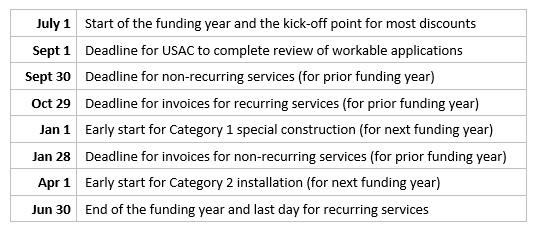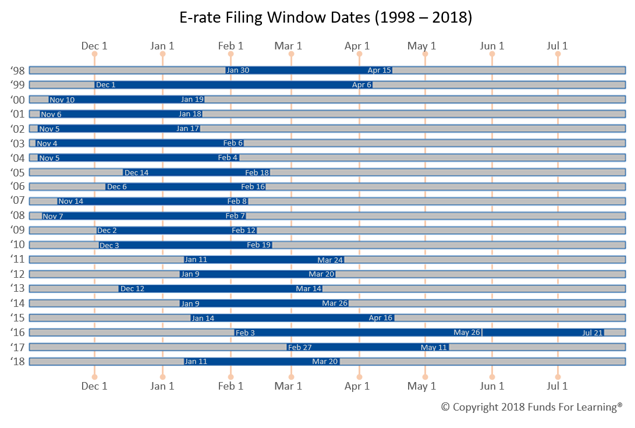Knowing deadlines and planning ahead are two of the most important steps an applicant can take to manage the E-rate process effectively. Having fixed dates helps!
Firm dates are not a new or particularly novel concept when it comes to the E-rate. Here are eight of the fixed dates we already manage:
Imagine if the procurement cycle and funding requests offered the same predictability. Knowing the deadline to award contracts and submit applications would improve the process for schools and libraries, service providers, USAC, and even the FCC. Fixed dates would reduce uncertainty and improve the performance of the entire E-rate ecosystem.
Setting the Dates
The dates of the filing window could be officially set in regulation by the FCC; or they could be published by USAC as target dates (i.e. for planning purposes). Either way, having predictable dates would help everyone.
And what should those dates be? The average length of the filing window is 82 days. We know the majority of applicants prefer an earlier filing window1 and that March is the most popular month to close it2. Putting those facts together, one good solution would be:
Open: January 2
Close: March 25
Length: 82 days
Of course, this is not the only option available. There are many possibilities from which to use, and there are advantages and disadvantages to them all. More important than the specific dates is the establishment of a fixed filing window. If USAC and the FCC will take this step, it will move the E-rate program another step forward towards its goal of better serving schools and libraries.


